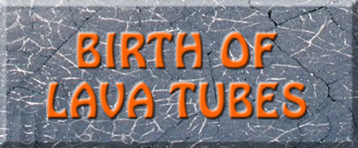

|
Formation of lava tubes requires a special kind of volcanic eruption: those where fluid lava flows down the sides. The more explosive type of eruption known as pyroclastic, where rocks, cinders, and ash are ejected, donít form tubes. Within fluid lava flows, there are two main mechanisms for forming tubes. In one type, the upper surface of the lava flow begins to cool, and the lava beneath continues to flow in tubular conduits beneath the surface. In another common scenario, channels carrying lava become roofed over as material accretes to the side, eventually forming a solid roof. Due to the insulating effects of the hardened lava above, molten lava is able to travel considerable distance underground with very little cooling. In Hawaii, lava tubes have carried fluid lavas 50 or more miles from their source and thereby played a large role in shaping the islands. Whether on the surface or underground, flowing lava behaves like most rivers would, flowing downhill, around obstructions. Lava flowing underground sometimes returns to the surface through existing skylights, or ruptures the surface when the flow volume becomes too high, creating a breakout entrance. All the photos on this page, except for the top one, were taken by scientists working for the U.S. Geological Survey based at the Hawaiian Volcano Observatory, and are used by permission of the USGS. |

| Above: Skylights indicate an active tube flowing under a hardened crust, and below, a closer view of an active skylight. |
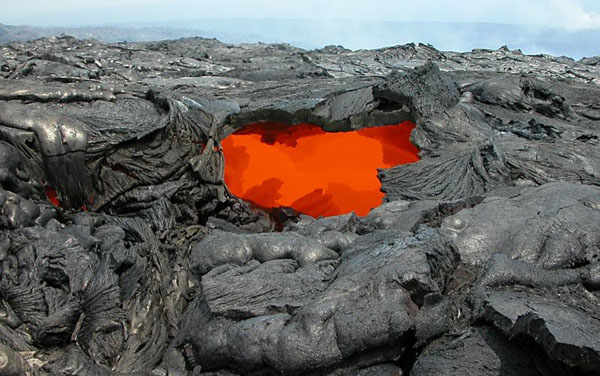

| Above: Channelized lava with a large piece of hardened crust wedged in the center, which is one way in which a channel can roof over to form a tube. Below, another mechanism for a channel to roof over is by accretion of material along the edges that can coalesce to form a roof. |
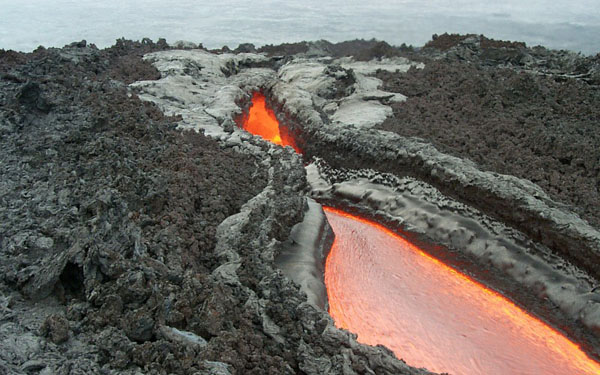
 |
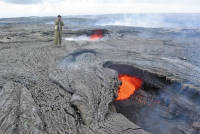 |
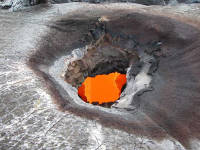 |
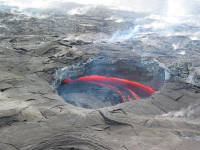 |
 |
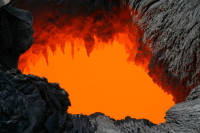 |
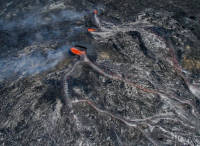 |
 |
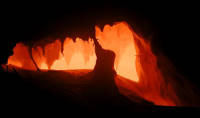 |
Choose a thumbnail above to zoom in on more images of active skylights from the USGS archives.
 |
New! Watch a video clip of lava flowing inside an actively flowing lava tube! Clip size: 3 Mb Courtesy of |
| Back to: | |
 |
Created: December 11, 2008 |